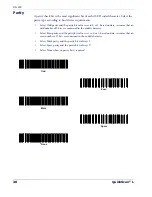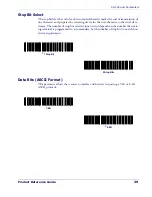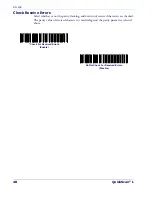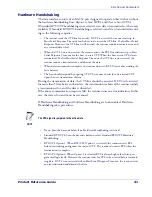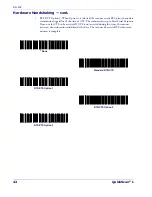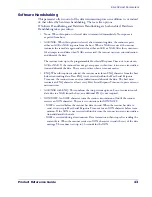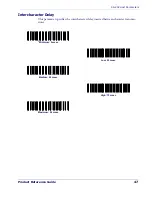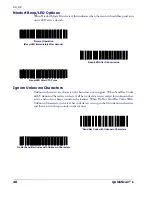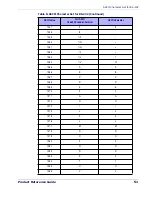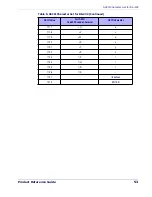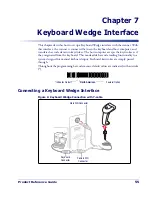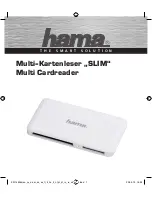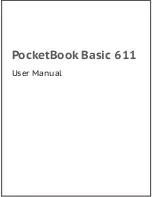
RS-232 Host Parameters
Product Reference Guide
41
Hardware Handshaking
The data interface consists of an RS-232 port designed to operate either with or without
the hardware handshaking lines,
Request to Send
(RTS), and
Clear to Send
(CTS).
If Standard RTS/CTS handshaking is not selected, scan data is transmitted as it becomes
available. If Standard RTS/CTS handshaking is selected, scan data is transmitted accord-
ing to the following sequence:
•
The scanner reads the CTS line for activity. If CTS is asserted, the scanner waits up to
Host Serial Response Time-out for the host to de-assert the CTS line. If, after Host Serial
Response Time-out, the CTS line is still asserted, the scanner sounds a transmit error, and
any scanned data is lost.
•
When the CTS line is de-asserted, the scanner asserts the RTS line and waits up to Host
Serial Response Time-out for the host to assert CTS. When the host asserts CTS, data is
transmitted. If, after Host Serial Response Time-out, the CTS line is not asserted, the
scanner sounds a transmit error, and discards the data.
•
When data transmission is complete, the scanner de-asserts RTS 10 msec after sending the
last character.
•
The host should respond by negating CTS. The scanner checks for a de-asserted CTS
upon the next transmission of data.
During the transmission of data, the CTS line should be asserted. If CTS is de-asserted
for more than 50 ms between characters, the transmission is aborted, the scanner sounds
a transmission error, and the data is discarded.
If the above communication sequence fails, the scanner issues an error indication. In this
case, the data is lost and must be rescanned.
If Hardware Handshaking and Software Handshaking are both enabled, Hardware
Handshaking takes precedence.
•
None: Scan the bar code below if no Hardware Handshaking is desired.
•
Standard RTS/CTS: Scan the bar code below to select Standard RTS/CTS Hardware
Handshaking.
•
RTS/CTS Option 1: When RTS/CTS Option 1 is selected, the scanner asserts RTS
before transmitting and ignores the state of CTS. The scanner de-asserts RTS when the
transmission is complete.
•
RTS/CTS Option 2: When Option 2 is selected, RTS is always high or low (user-pro-
grammed logic level). However, the scanner waits for CTS to be asserted before transmit-
ting data. If CTS is not asserted within Host Serial Response Time-out, the scanner issues
an error indication and discards the data.
NOTE
The DTR signal is jumpered to the active state.
Summary of Contents for QuickScan L QD 2300
Page 1: ...QuickScan L QD 2300 Bar Code Scanner Product Reference Guide...
Page 10: ...Introduction 4 QuickScan L NOTES...
Page 14: ...Getting Started 8 QuickScan L NOTES...
Page 24: ...Problem Isolation 18 QuickScan L NOTES...
Page 50: ...RS 232 44 QuickScan L Software Handshaking cont None ACK NAK ENQ ACK NAK with ENQ XON XOFF...
Page 60: ...RS 232 54 QuickScan L NOTES...
Page 80: ...Keyboard Wedge Interface 74 QuickScan L NOTES...
Page 100: ...USB Interface 94 QuickScan L NOTES...
Page 162: ...156 QuickScan L NOTES...
Page 184: ...178 QuickScan L NOTES...
Page 186: ...180 QuickScan L NOTES...
Page 190: ...184 QuickScan L...
Page 191: ......












